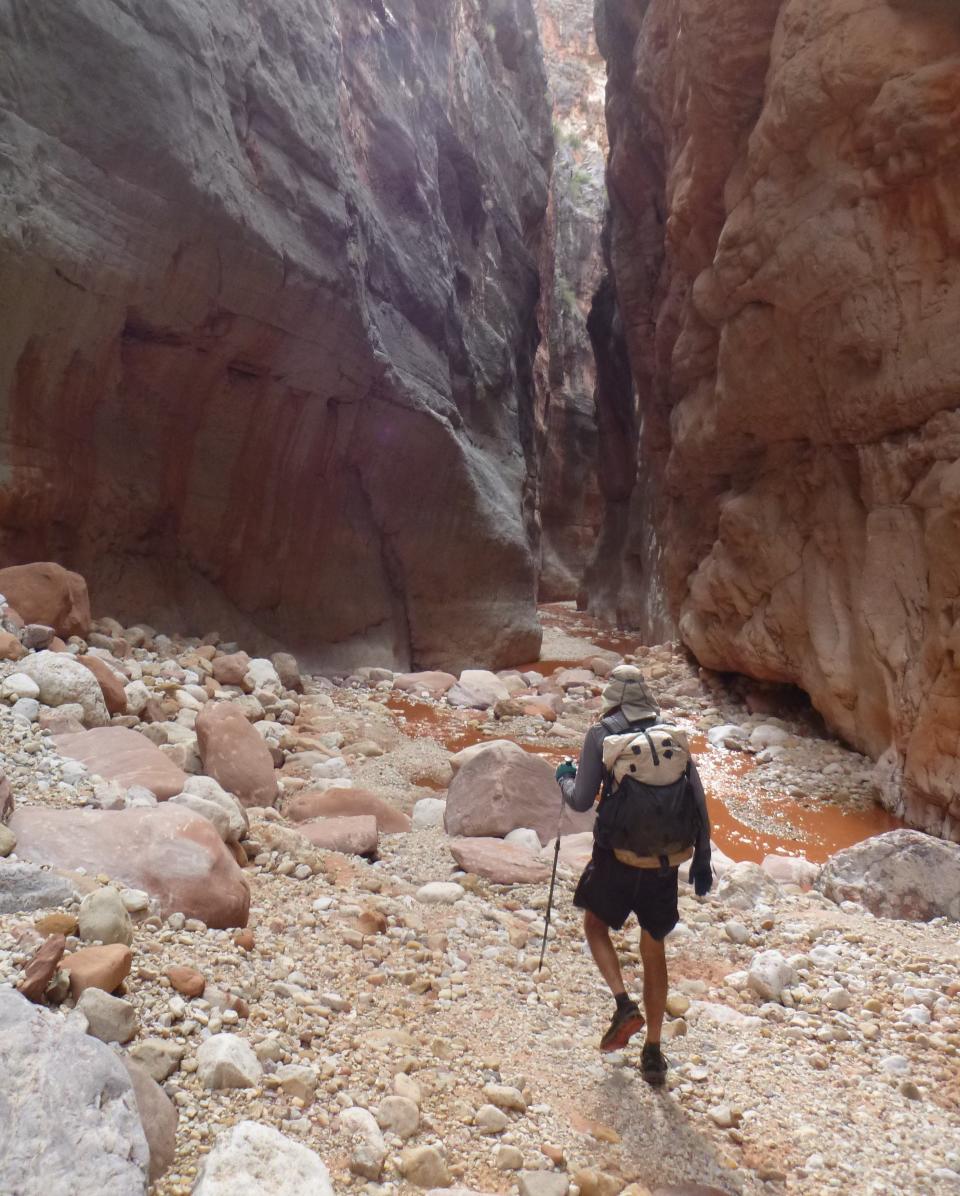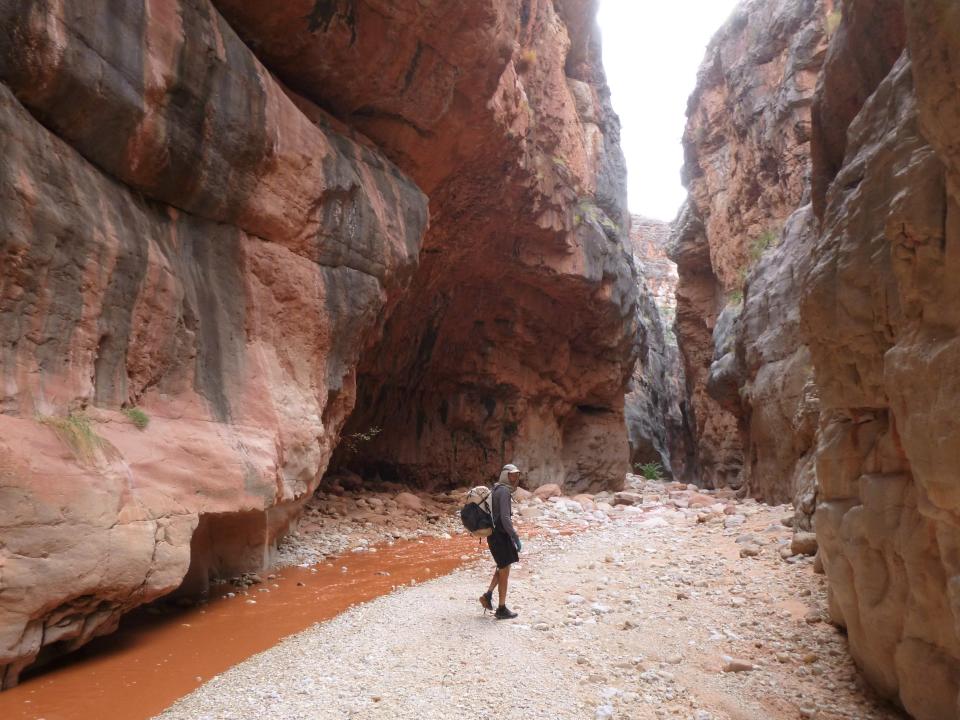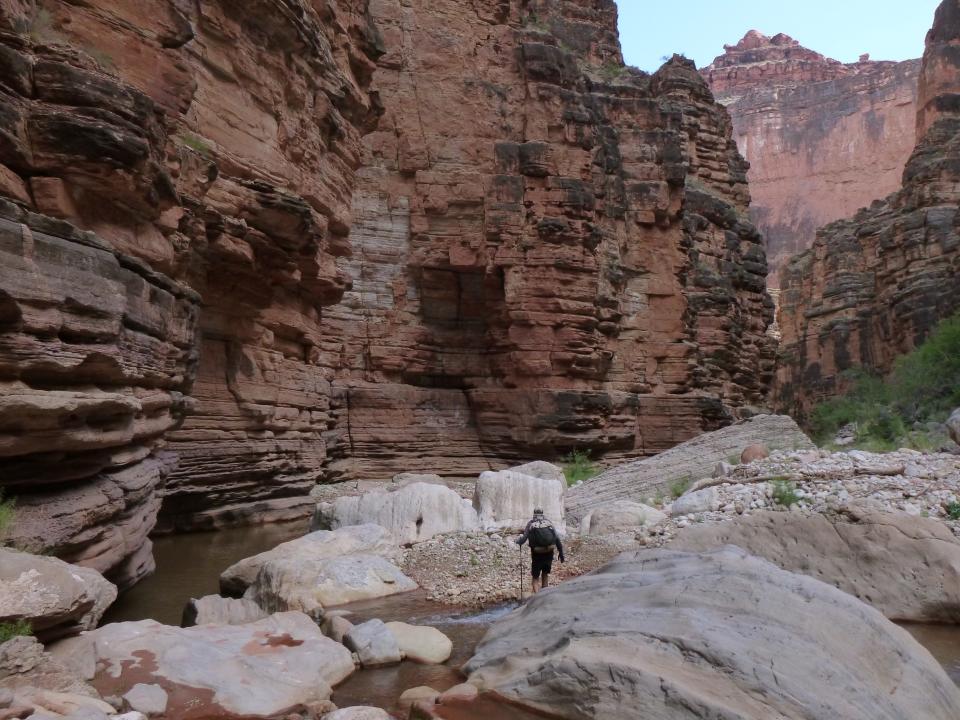'They did everything they could': Rescued Grand Canyon hiker says he was not abandoned
William "Bill" Formanek has hiked, backpacked and climbed all sorts of trails and mountains in both Europe and the U.S.
But last Friday, the 63-year-old Apache Junction man injured his shoulder while hiking the Kanab Creek area in the north rim of the Grand Canyon.
"It was a very unfortunate slip. My shoulder was severely dislocated. It was extremely painful," Formanek told The Arizona Republic on Tuesday.
Formanek was initially among four other friends who are experienced hikers whom he has known for about 15 years.
He and one of his friends wanted to go farther on the hike and see more things in the area that were south of their campsite. The other three didn't want to go as far and decided to just go to the campsite, he said.
Around 2:30 p.m., Formanek and his friend were headed back to the campsite from their exploration when he slipped crossing a creek, fell sideways against a boulder, and "severely" dislocated his shoulder. He wasn't going to be hiking any farther that night.
"Due to the extreme pain, and rugged terrain, there was no way I could continue to hike," he said.
There was no cellphone service in Kanab Creek. Out of the five friends, only two had a satellite device that could call for help. However, those devices were in the hands of the other three friends.
"It's something you never think about," Formanek said. He said he expected that all five friends were going to be together for the duration of the trip — all with access to the two devices. Even then, he said groups typically make sure at the beginning of the trip that the group collectively has devices, but when people decide to separate, it's not always thought of to make sure each group has a device on hand.
Without a way to call for rescue, Formanek said he and his friend had two options: The two friends stay together and wait until the rest of the group searched for them after they did not show up at their camp; or, Formanek's friend hike to catch the others to use their satellite devices and call for a rescue.
Option one would have taken time and risk, Formanek said. It would have been dangerous for the group to risk hiking in the dark. His chance of rescue would not have come until daylight. He said at best, rescue would have been one or two days after his accident.
"I had food, water, and all my gear, so if my friend stayed with me all he could do was sit and watch me suffer in pain."
Formanek said he was thankful they chose the second option.
After 5 p.m. and 5 miles later, his friend reached the rest of the group and requested a search and rescue with the satellite device, though Formanek said communication was slow and intermittent in the narrow canyon.
But Formanek didn't know whether help would come that night. He said once it got dark, he was convinced he might have to wait for help, alone.
"I was sitting there wondering, 'Am I going to make it through the night?'" He said he wasn't worried about living through the night; he had all the necessities he needed. It was the possibility of enduring the pain of his injury throughout the long night that concerned Formanek.
But to his amazement, around 8:30 p.m., a helicopter circled the area and he made his location known with his headlamp.
"When that chopper showed up in the dark, I was overjoyed and shocked that it was out looking for me in the dark."
The helicopter had to land about a quarter of a mile from his location due to the narrow, deep area he was in. When they reached him, the search and rescue team put his arm in a sling.
"I can confidently say it did absolutely nothing to reduce the pain," Formanek said. Even narcotics couldn't help the pain that cut his hiking trip short.
He was then taken to a Flagstaff hospital.
Early the next morning, Formanek said his friends had planned to split into two groups. One group was going to hike back to him and the other group was to move higher where they might have better satellite communication.
But after 6 a.m., emergency services notified the friends that Formanek was airlifted safely. With that news, they began their hike out of the canyon.
Formanek said if he could go back and do anything differently, he would be more careful.
"Be prepared for the worst-case scenario. If you become injured to the point you can't hike, have a plan. Generally speaking, that's going to be to have a satellite device that can call a rescue team."
'The press release was inaccurate': Missing details released to public
The Mohave County Sheriff's Search and Rescue team posted to Facebook on Sunday about the rescue efforts for Formanek. The Republic published a story based on the details the agency released.
Details in the post included the events of what happened and stated that after contact for help was confirmed by the hiking group, the four left with the device and "continued on their backpacking adventures — leaving the injured hiker behind alone."
The post ended with advice to hikers to never leave someone behind alone, to stay with them whenever possible, and ensure they are rescued before continuing on the journey.
After reports of the group leaving Formanek behind, comments criticizing the rest of the hiking group were posted to social media. Members of the group sent emails and left voicemails for The Republic, claiming they were grossly misrepresented.
On Monday, the Mohave County Sheriff's Office told The Republic that they stood by the details in the Facebook post, as it was what Formanek had told them the night of the injury.
But Formanek said that he explained the entire situation multiple times to them. He said he told them that if his friends did not go find the others, they would not have known he was injured.
He said the news release affected his friends.
"My co-hikers were very upset that the press release was inaccurate, like, fuming and couldn't sleep at night."
Formanek said he was grateful for his friends and the decision they made after his injury.
"I think my friends did everything right. They did everything they could. They didn't do anything stupid to put themselves at risk," Formanek said.
He also said he was extremely thankful to the amazing Department of Public Safety and the Sheriff's Office that had managed to find and extract him in the dark.
On Wednesday, the Mohave County Sheriff's Search and Rescue team updated their Facebook post after speaking with Formanek. The updated post encouraged hikers to "be prepared for the unexpected" when adventuring in the remote, wilderness areas of Mohave County.
How to avoid hiking injuries in a group
Here are some tips on how to hike out in the wild.
Hiking is best done with someone else, according to the Grand Canyon National Park. "Don't hike alone," the park's website warns, adding in bold, "You are responsible for your own safety as well as that of everyone in your party."
The Grand Canyon has a few preparation tips:
Know your destination and how to arrive there.
Know the weather forecast.
Know the availability of water.
Stay on the trail.
Do not "overestimate capabilities".
Brian Whitehead, a senior program manager at McDowell Sonoran Conservancy in Scottsdale and former National Park Service ranger urged a few tips.
Make sure your shoes do not blister your feet.
Practice walking over rough surfaces and not tripping.
Use the same equipment you would use on the bigger hike.
Whitehead also said that hikers should be prepared with a first aid kit, and knowledge of first-aid. He also said hikers should carry a sling to help someone who has injured their shoulder, much like Formanek.
Lastly, Whitehead said if someone is injured, the biggest solution is to finding help.
This article originally appeared on Arizona Republic: Injured Grand Canyon hiker says he was not abandoned by friends



